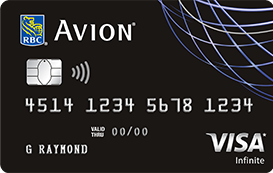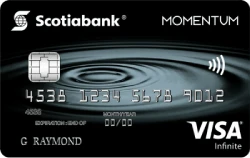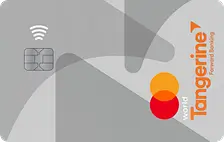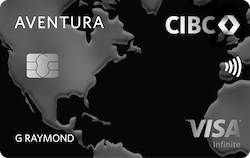Many credit cards now offer mobile device insurance, and it’s easy to see why. Smartphones aren’t cheap, so having his type of insurance is a valuable perk that can save you a lot of money. Let’s break down how mobile device insurance works and look at the best credit cards in Canada that offer this credit card benefit.



MoneySense is an award-winning magazine, helping Canadians navigate money matters since 1999. Our editorial team of trained journalists works closely with leading personal finance experts in Canada. To help you find the best financial products, we compare the offerings of major institutions, including banks, credit unions and card issuers. Learn more about our advertising and trusted partners.
What is mobile device insurance?
Credit card mobile device insurance typically includes $1,000 in coverage for a damaged or stolen phone, as long as you purchased the device or pay for the monthly contract using the credit card. The insurance covers only the phone itself—it doesn’t cover the battery or any accessories, such as headphones or a protective case. Pre-owned or refurbished phones are not covered, even if you use the credit card to make the purchase.
How credit card mobile device insurance works
As with any insurance policy in Canada, there are a few details to watch for when it comes to mobile device insurance.
- Coverage period: When you buy a new mobile device on your credit card, the insurance doesn’t usually begin immediately. There’s often a delay of one to three months before it begins. Additionally, the coverage isn’t forever—typically, coverage applies for a maximum of two years from the purchase date.
- Coverage limit: Mobile device insurance is usually capped at $1,000, meaning that any money you spend above that threshold will not be covered should something happen to your device.
- Deductible: Like other insurance policies, mobile device coverage usually comes with a deductible—the amount you pay before receiving any insurance benefits. Some policies calculate the deductible based on the purchase price of the device, while others account for the purchase price and depreciation.
- Depreciation: Mobile device insurance takes depreciation into account when determining the value of your phone. In simple terms: The longer you own the device, the less it’s worth. A standard rate of depreciation is 2% per month, meaning that in a year, your phone will have lost 24% of its value.
- Lost or stolen devices: If you make a claim for a missing device, you have 48 hours to notify your provider and stop your wireless service. The insurance doesn’t cover devices stolen from checked luggage or baggage not in your possession.
- Claim limits: You’re entitled to make one claim per year. In the case of some credit card companies, this limit applies across all cards.
Although there are some limitations with credit card mobile device coverage, it’s an attractive perk, because it doesn’t cost you anything extra and applies automatically.
The best credit cards with mobile device insurance
Here are some of the best credit cards in Canada that come with mobile device insurance.
| Credit card | Mobile device insurance coverage |
|---|---|
| RBC Avion Visa Infinite Annual fee: $120 | $1,500 |
| Scotiabank Momentum Visa Infinite Annual fee: $120 | $1,000 |
| American Express Cobalt Annual fee: $156 | $1,000 |
| Tangerine World Mastercard Annual fee: $0 | $1,000 |
| CIBC Aventura Visa Infinite Annual fee: $139 | $1,000 |
RBC Avion Visa Infinite
At a glance: With the RBC Avion Visa Infinite, a generous $1,500 in mobile device coverage is complemented by several types of travel and car rental insurance for a must-have in travellers’ wallets. Plus, you can use Avion points to purchase your mobile device and it will still be insured.
RBC Avion Visa Infinite
Annual fee: $120
- 1.25 Avion points per $1 spent on travel (including flights, hotels, taxis and public transit)
- 1 point per $1 on all other purchases
Welcome offer: Earn up to 35,000 Avion points ($750 value) upon approval.
Card details
| Interest rates | 20.99% on purchases, 22.99% on cash advances and on balance transfers (21.99% for Quebec residents) |
| Income required | $60,000 per year |
| Credit score | None specified |
| Point value | 1 RBC Avion point = Up to $0.023 when redeemed for travel using RBC’s Air Travel Redemption Schedule. |
Pros
- Mobile device coverage is capped at $1,500, which is higher than any other card on this list.
- Whether you purchase your phone with your card or using Avion points, your device is still covered under the insurance policy.
- The deductible for making a claim is calculated at 10% of the purchase price, adjusted for depreciation.
Cons
- You have to make a claim before taking any other action, such as having your device repaired, or risk having your claim denied.
- If your phone is stolen, you have to notify the police on the same day it goes missing.
Scotiabank Momentum Visa Infinite
At a glance: The Scotiabank Momentum Visa Infinite includes $1,000 of mobile device coverage that is activated just 30 days from the time of purchase of the phone. When you consider the seven other types of insurance, and the ability to earn cash back, this card is worth your consideration.
Scotiabank Momentum Visa Infinite
Annual fee: $120
- 4% cash back on groceries, recurring bill payments and subscription services
- 2% on gas and public transit
- 1% on everything else
Welcome offer: Earn 10% cash back on all purchases for the first 3 months (up to $2,000 in total purchases). Offer ends June 30, 2025.
Card details
| Interest rates | 20.99% on purchases, 22.99% on cash advances, 22.99% on balance transfers |
| Income required | Personal income of $60,000 or household income of $100,000 |
| Credit score | 725 or higher |
Pros
- Unlike some other policies, the mobile device insurance with the Scotiabank Momentum Visa Infinite begins just 30 days from the time of purchase.
- Your deductible is calculated based on the depreciated value of your device, not the purchase price.
Cons
- If your mobile device is capable of using cellular data, you have to have it activated in order to be covered by the insurance. This may leave some devices, like tablets run on Wi-Fi, unprotected.
American Express Cobalt
At a glance: With a standard $1,000 in mobile device insurance, plus the ability to earn points and Amex membership benefits, the American Express Cobalt card has a solid offering.
American Express Cobalt
Annual fee: $156
- 5 points per $1 on dining and groceries
- 3 points per $1 on streaming services
- 2 points per $1 on transit and gas
- 1 point per $1 on all other purchases
Welcome offer: Earn 1,250 points for each month you spend $750, up to a maximum of 15,000 points.
Card details
| Interest rates | 21.99% on purchases, 21.99% on cash advances |
| Income required | None specified |
| Credit score | 725 or higher |
| Point value | 1 Amex Membership Rewards point = $0.01 when redeemed with the Flexible Points Travel Program, $0.015 on average with the Fixed Points Travel Program, and up to $0.02 with airline points transfers |
Pros
- The coverage kicks in very quickly if you pay for your device in full. In the event your device is lost, coverage begins on the date of purchase as long as you paid the full amount on your card. If you finance your device, the starting date is considered to be when the first transaction appears on your card.
Cons
- Even if you carry more than one card by American Express, you can only make one mobile device insurance claim per year.
- If your mobile device is capable of using cellular data, you have to have it activated in order to be covered by the insurance.
Tangerine World Mastercard
At a glance: For a no-annual-fee card, the Tangerine World Mastercard’s standard $1,000 new mobile device coverage policy is one of several nice add-ons, including rental car collision and loss coverage and free Wi-Fi through Boingo Wi-Fi for Mastercard.
Tangerine World Mastercard
Annual fee: $0
- 2% in up to 3 categories of your choice (including groceries, gas and dining)
- 0.5% cash back on everything else
Welcome offer: Earn an extra 10% cash back on up to $1,000 in purchases during the first two months. Offer ends Jan. 31, 2025.
Card details
| Interest rates | 20.99% on purchases, 22.99% on cash advances, 22.99% on balance transfers |
| Income required | $60,000 per year |
| Credit score | 725 or higher |
Pros
- The coverage starts 30 days from purchase of your mobile device.
- The deductible is based on the purchase price less depreciation.
Cons
- You must get the insurer’s approval before you do anything, including attempting repair.
- Mobile devices with cellular data capability must be activated with a provider, which rules out those that run on Wi-Fi only.
CIBC Aventura Visa Infinite
At a glance: When you pay for your new mobile device with the CIBC Aventura Visa Infinite, you’ll have up to $1,000 in insurance protection for loss, theft and damage. This policy has more relaxed time requirements for reporting but the paperwork required to make a claim is rather onerous.
CIBC Aventura Visa Infinite
Annual fee: $139
- 2 points per $1 spent on travel through the CIBC Rewards Centre
- 1.5 points per $1 on gas, groceries and drugstores
- 1 point per $1 on everything else
Welcome offer: Earn up to $1,450 in value, including a first year annual fee rebate.
Card details
| Interest rates | 20.99% on purchases, 22.99% on cash advances, 22.99% on balance transfers |
| Income required | Personal income of $60,000 or household income of $100,000 |
| Credit score | 760 or higher |
| Point value | 1 point= $0.01 on average |
Pros
- Whether you purchase your phone using your card or Aventura points, you’re covered under the insurance policy.
- Your deductible for a claim is the purchase price, less depreciation.
- After a loss or theft, you have up to 48 hours to suspend your cell service and up to seven days to notify the police in the event of theft.
Cons
- If you want to claim for a repair, you have to submit a written estimate from a repair service that’s authorized by the phone manufacturer, possibly limiting your options.
- The documentation to make a claim is substantial and includes the original sales receipt, a copy of the manufacturer’s warranty, credit card statements showing either the full purchase price or the monthly payments for your cell phone bill.
What if your credit card doesn’t have mobile device insurance?
Not all is lost. You do have a few options.
Insurance from the dealer or manufacturer
If you don’t get mobile device insurance through your credit card, you can still get coverage, but it might cost you a few hundred dollars.
Google Preferred Care is a two-year insurance package that covers accidental damage and loss. The cost depends on the model of your device, and there’s a service fee associated with making a claim, which is also model-dependent. You can enroll for up to 30 days after purchase and you can make two claims per 12-month period.
AppleCare, for Apple phones and other devices, extends hardware, software and technical support past the first 90 days included with your mobile purchase. The cost to insure your iPhone depends on the model, but it starts at $99 for two-year protection of an iPhone SE. Two years’ worth of coverage for an iPhone 15 is $269. There’s a service fee for each claim: $39 for screen or back glass damage, and $129 for other accidental damage, plus applicable taxes.
You may also be able to purchase protection directly from the store. Best Buy, a big box retailer, offers Canadians protection plans. The replacement plan is for defective phones. Once you send in your phone, you’ll receive a Best Buy gift card for the purchase price amount. You can replace or repair your cell phone up to two times.
Insurance from the cell phone provider
You may also have the option to buy mobile device protection from your cell phone provider.
Rogers offers device protection plans for Apple and Android products that include loss or damage coverage, starting at $7.99 per month. The device protection plan for iPhone users features Apple Care services, which includes unlimited service requests and one device replacement for loss or theft. Android users get up to three service requests per 12 month period and one device replacement. One of the benefits of insuring your device this way is the speed of service: repairs can often be done on the same day, and replacements can often be received the next day.
Similar to Rogers, Telus partners with Apple to give the Apple Care iPhone protection plan to clients, with coverage starting at $9 per month. For $15 per month, Android users can buy Device Care Complete, which includes unlimited repairs for cracked screens and liquid damage, as well as free battery replacements. Repairs through Apple Care are handled by Apple, while phones protected by Device Car Complete have to be repaired at a Mobile Klinik location.




